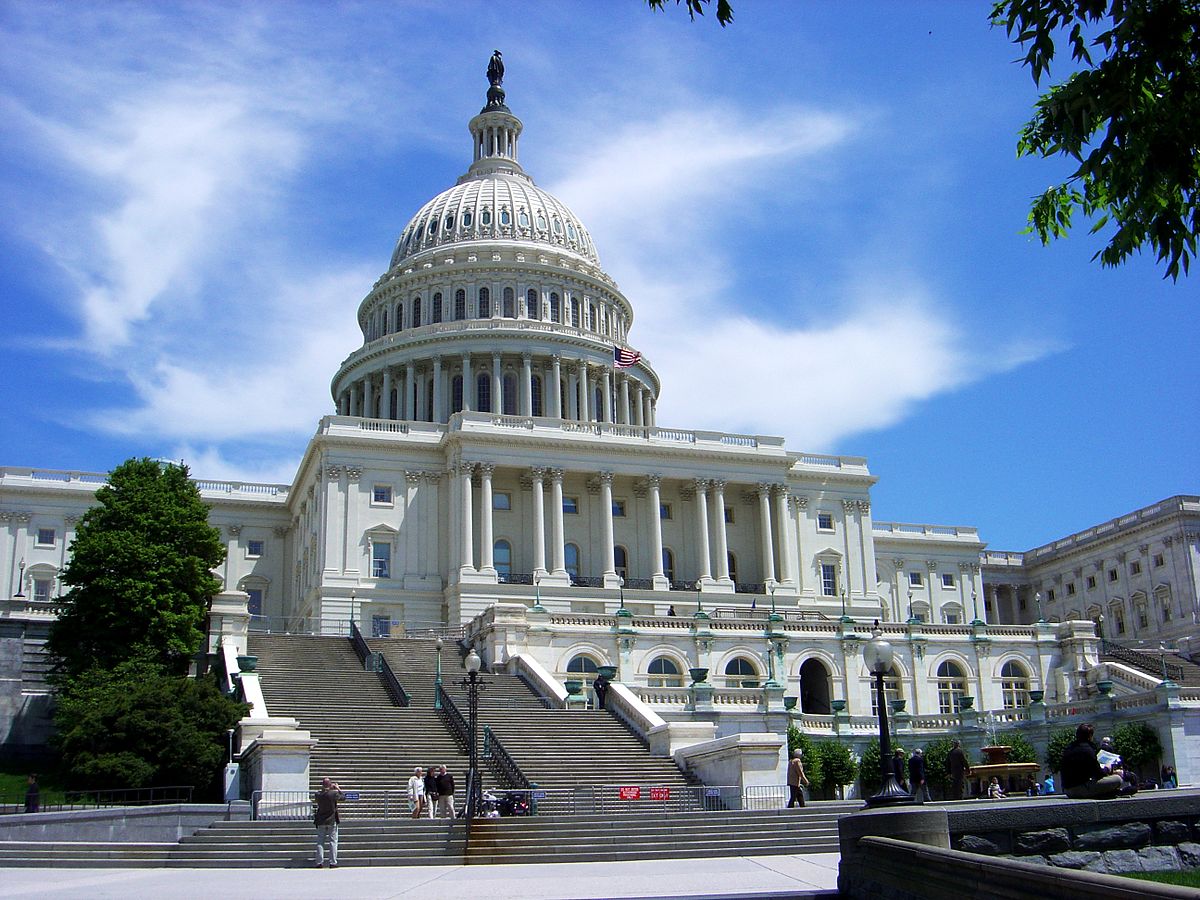In the Trump administration, are we witnessing the undermining of democracy and the rise of tyranny? Can the institutions of American Democracy provide effective resistance?
Last fall, in another world altogether, I wrote an Impakter article on “The Great Turning” where I surveyed marvelous new possibilities for our country’s economic and environmental health. Then Donald Trump was elected President and it has become U-Turn all the way, with both democracy and the fate of our beloved planet up for grabs.
Progressive liberalism is based on the idea that problems can be solved if we use our reason to arrive at solutions, analyze their feasibility, and enact them through democratic measures. Those were Hillary Clinton’s strengths and that is why we voted for her; it was inconceivable that a sufficiently large number of Americans would come down on the side of illogic and bigotry. Even after Donald Trump was elected, many of us assumed that he would abandon his campaign rhetoric and settle down to govern sensibly.
The minute he was in office, Trump spewed forth a series of executive orders full of anti-democratic malevolence and of questionable legality. On a single day, (January 24) he called for the restoration of torture in reconstituted “black sites,” denied citizens of “predominantly Muslim” countries entry into the United States, froze Federal hiring, and terminated research funding for the Departments of Agriculture, Commerce, and the Environmental Protection Agency.
Trump asked for lists of scientists working on climate change, prohibited the Environmental Protection Agency and other executive departments from publishing scientific data, and placed a gag order forbidding career civil servants to disseminate their research and findings. “2+2=5,” remarks a New York Times reporter in an article called “Am I Imagining This?” It was no wonder that George Orwell’s 1984, a dystopian novel detailing how despots suppress facts derived from reason while disseminating misinformation (“alternative truths” in Trumpspeak) began to fly off bookstore shelves; Hannah Arendt’s The Origins of Totalitarianism (published in 1951) began to sell briskly as well.
By the end of Trump’s second week the New York Times was already characterizing his pronouncements as authoritarian. “Is this a coup,” asked Yonatan Zunger: “The administration is testing the extent to which the DHS (and other executive agencies) can act and ignore orders from the other branches of government. This is as serious as it can possibly get: all of the arguments about whether order X or Y is unconstitutional mean nothing if elements of the government are executing them and the courts are being ignored.”
IS THIS TYRANNY?
Tyranny is defined as one person holding all of the power and wielding it in cruel and undemocratic ways; tyrannical, as an adjective, applies to oppressive, harsh, or unjust acts. Despotism, similarly, accords absolute power to a single ruler. In the twentieth century, tyrants and despots were usually called dictators who govern by fiat.
Long before the election, Robert Reich, former Secretary of Labor and now a progressive political commentator, saw this happening. “Like a Tyrant,” Reich warned, “Trump is employing 7 techniques to control the media.” He cautioned that Trump was too mentally challenged and morally abnormal to be president and should not be “normalized.”
Reich’s prophesies proved unnervingly correct. On January 27, Trump issued an Executive Order prohibiting citizens of seven “predominantly Muslim countries” from entering the United States, a classic fascist-style ploy to garner allegiance by targeting enemies of the nation. The order is attributed to Alt-Right presidential advisor Stephen Bannon.
How did we get a mentally and morally abnormal president directed by a far right Svengali and backed by a cabinet of billionaire businessmen along the lines of Putin’s despotic oligarchy?
It wasn’t a coup d’état: Trump won the Electoral College after a series of “rust belt” states swung the vote his way, a victory widely attributed to “populism.”
WHAT IS POPULISM?
The original populists were members of the People’s Party, a late 19th century alliance of farmers and laborers determined to replace the Democratic Party’s “eastern elite.” Consisting of the Southern Alliance, the Farmer’s Mutual Benefit Association and the Colored Farmer’s Alliance, the platform called for the abolition of national banks, a graduated income tax, the eight hour day, and opposition to foreign-owned businesses. At their first convention the Southern Alliance, fearful that inclusion of negroes would upend white supremacy, marginalized the Colored Farmer’s Alliance.
A dictionary definition defines populism as “a political style of action that mobilizes a large alienated element of population against a government seen as controlled by an out-of-touch closed elite that acts on behalf of its own interests. …Its goal is to unite the uncorrupt and the unsophisticated (the ‘little man’) against the corrupt dominant elites (usually the orthodox politicians) and their camp followers (usually the rich and the intellectuals). It is guided by the belief that political and social goals are best achieved by the direct actions of the masses.”
Surveying a similar trend in “Is Europe Disintegrating?” Timothy Garton Ash describes populism elevating “the people” over “all other sources of legitimate political authority, be it constitutional court, head of state, parliament, or local and state government. Donald Trump’s ‘I am your voice’ is a classic populist statement.”
Trump voters were people teetering on the edge of the middle and working classes watching their “American Dream” of a good job, home ownership, and a better future for their children vanish. They responded to his promise to Make America Great Again. and enjoyed a tremendous catharsis of nose-thumbing at “politically correct” intellectual and financial elites. In a time of rampant economic inequality, they saw Trump a strong leader willing to take direct action to alleviate their fear of economic and social displacement.
RESISTANCE
How were we to live now, we asked ourselves, with a despotic president whose first weeks resembled a coup? We were shocked to the depth of our rational beings by this lies, impulsiveness, and cruelty: were we face to face with true evil? “Serious evil must be seriously dealt with,” Reinhold Niebuhr wrote, but Niehbuhr was a Christian. Where could ordinary secular folks like us find weapons to engage these depths of malevolence?
Every night of Trump’s first month, Robert Reich aired a “Resistance Video” instructing about what we were facing and what we must do. Interest groups determined to protect democratic principles sprang up all over the country to form a disparate, but determined, Resistance Army.
HOW TO RESIST:
Marching
On the day after the inauguration, hundreds of thousands of men, women, and children poured into the Capital for the Women’s March on Washington, while cities all over the country saw thousands more express their love of democracy and distrust of the new regime. There were protests at Trump Tower and Trump buildings all over the country. Deeply alarmed by the administrations attack on their work, American Scientists began to organize a march on Washington of their own. These marches served to fire people up, network with each other, and form new groups for further action.
Disruption
One of these groups, Indivisible Guide. Org, alerted local groups to the Town Halls that their Members of Congress held during the February Congressional Recess, where constituents voice outrage at Congressional inaction investigated Trump’s Russian connections and aired demands that their health care not be weakened. One strategy was to keep asking the same question if the legislators answered it evasively; when “alternate truths” were provided, everyone yelled slogans like “tell the truth,” and “do your job.”
There was creativity and humor: on Valentine’s day, for example, activists presented their Congressman’s office staff (he was not there, and hadn’t called a town meeting) with 20,000 candy hearts, each symbolizing a constituent who would lose health care if they voted to repeal the Affordable Health Care Act.
Related article: “THE GREAT TURNING: FROM MUTANT CAPITALISM TO THE CIRCULAR ECONOMY”
Civil Servant Resistance
“Across the vast federal bureaucracy,” reported the New York Times , Trump’s “arrival in the White House has spread anxiety, frustration, fear and resistance among many of the two million nonpolitical civil servants who say they work for the public, not a particular president.”
In the weeks leading up to the inauguration, Federal workers overcame their “sense of dread” to resist Trump’s moves to suppress science. They secured data and established new web sites for its preservation. When the government erased their Twitter account, for example, National Parks employees built alternate sites and kept on tweeting. Meanwhile, civil servants at the State Department and Immigration offices slowed down the paperwork necessary to enforce the ban on immigration.
Citizen Contacts
The magic number 202 224-2131 (it connects you to your Member of Congress) having been disseminated on social media, Congressional voice mails were filled and blocked intermittently for the whole month long, while emails and letters piled up in legislative offices. When individual citizens joined and responded to action calls from long-established groups like the ACLU, Planned Parenthood, and the Sierra Club their impact multiplied exponentially.
Personal Witness
Small acts of defiance add up when they are reported via social media venues like Pantsuit Nation’s Facebook Page with instructions on how to do it yourself. For example, there is a video about what to do when you see a Muslim or Black or LGBT person being harassed. You say “Hi, Betty” (invent any name), you sit down next to them and chat, ignoring the harasser. If necessary, say “do you want to get a coffee?” and exit the area accompanying them.
This may sound like something obvious, but most of us react with stunned silence when bigotry happens right in front of us and find these thoughts helpful to shape an appropriate response.
Checks and Balances: Our Most Powerful Weapon
Under the American Constitution, Executive fiats can be overruled by the Congress and/or the Supreme court.
During Trump’s first weeks in office, as we learned how each of the three branches of American government provides a curb on the others, it became evident that our system of checks and balances is our most powerful weapon to resist tyranny.
In the Photo: The Legislative Branch: The Senate and the House of Representatives Photo Credit: Wikimedia Commons/Kevin McCoy, CC BY-SA 2.0
Republicans control the Congress with majorities in both the House of Representatives and the Senate. Even before the inauguration, Republicans in Congress moved to repeal President Obama’s Affordable Health Care Act. As a result of marches, protests, phone calls and letters from their constituents, however, Senators and Representatives are giving it another thought. Several Republicans have already backed down from supporting repeal without replacement.
Despite Trump’s attempts to destroy the Environmental Protection Agency, gut Obama’s energy regulations, and censor climate scientists, members of Congress are beginning to change their minds about climate change. The House of Representatives has established a bipartisan Climate Caucus; even more striking, “A Conservative Climate Solution” is being proposed by a prominent group of senior Republicans. Though an entirely new and Conservatively Republican plan, it shares some features plan proposed by the Citizen’s Climate Lobby, an international group interested in a Revenue Neutral Carbon Fee.
The Judiciary
The power of the American Judiciary is demonstrated in the response to the Friday, January 27 Executive Order. This immigration ban was immediately challenged, first by New York district Judge Anne Donnelly and then Washington State Attorney General Bob Ferguson, who was joined by Attorney General Lori Swanson of Minnesota in to bring suit in the 9th district court of Washington State. Amicus briefs from over a dozen additional states, ten prominent Democratic diplomats (including Secretaries of State John Kerry and Madeline Albright) and 97 business corporations were filed in support.
In the Photo: U.S. District Judge James Robart of the Western District of Washington Photo Credit: Youtube
While the Executive branch of the government can act on immigration and national security issues, its authority is subject to judicial review. On the morning of February 10, 2017, we were tremendously reassured to see Trump’s attempt at tyranny overruled by our independent judiciary:
SOURCE: NEW YORK TIMES ARTICLE
The 9th District Court challenges discrimination based on national origin; Virginia U.S. district Leonie M. Brinkema has frozen the executive order because it may violate the religious freedom clause of the Constitution, which significantly strengthens the argument against it.
CONCLUSION
Thus, by the third week of the Trump presidency, his despotic executive fiats were successfully challenged by the rule of law, while a well-organized resistance confronted legislators both at home and in Washington.
And then, before Trump’s first month was over, both the White House and the Security Council fell into dysfunction and disarray. The staff were at each other’s throats, formulation and execution of policy were mired in astonishing incompetence, with the lines of communication to the President frayed or non-existent.
Trump’s complete ignorance of how American democracy works not only rendered his office dysfunctional but immediately proved dangerous. When reports that North Korea had launched a missile into over the Sea of Japan arrived, Trump was in the public dining room at Mar-a-Lago, his Florida resort.
The spectacle of National Security business conducted at the table among crowds of diners, while the officer holding the nuclear code mingled with waiters and cell phone wielders, displayed what Executive incompetence looks like.
Only two days later Michael Flynn, the head of the National Security Council (who was present at that dinner) was forced to resign for lying about negotiating U.S. sanctions with Russian before Trump took office.
Trump’s own ties with Russian oligarchs, his admiration for Putin, and the possibility that he colluded with their electoral interference on his behalf, raised the dire possibility of his impeachment on the grounds of treason.
Is it ham-handed anarchy we are witnessing, rather than a concerted tyranny? “The security council is in turmoil,” remarked Conservative columnist David Brooks: “Mussolini supposedly made the trains run on time, but this group couldn’t manage fascism in a phone booth.” But with Michael Flynn gone, leaving Steven Bannon the dominant voice in the Security Council, the threat of tyranny seems the more likely problem, especially when we take into account Bannon’s play of creating Executive chaos to distract attention from what is going on in the Legislature.
The question for we Americans and our appalled allies is whether constitutional Democracy can withstand the onslaught.
As Van Jones tweeted on January 30, “This is no longer ‘left v right.’ The #Resistance is now a pro-democracy movement against a would-be authoritarian regime. Dems & GOP unite!” In his Rebuild the Dream, Van Jones has called for a “deep patriotism” in the form of alliances between business people and democratic socialists, Trump voters and Democrats, rich and poor, crossing racial and ethnic divides to foster a more “robust democracy.”
This dream cannot come into being until we liberals drop our elitist snootiness and learn to engage in authentic community cooperation. We need to stop trying to call all the shots ourselves and listen up to what grass roots organizations suggest.
In this way, Rural and urban poor as well as the faltering middle and working classes will become the basis of a progressive, truly populist coalition reaching across race, ethnicity and income in a respectful and equal alliance.
Recommended reading: “TRUMP POPULISM: A THREAT TO DEMOCRACY?”














